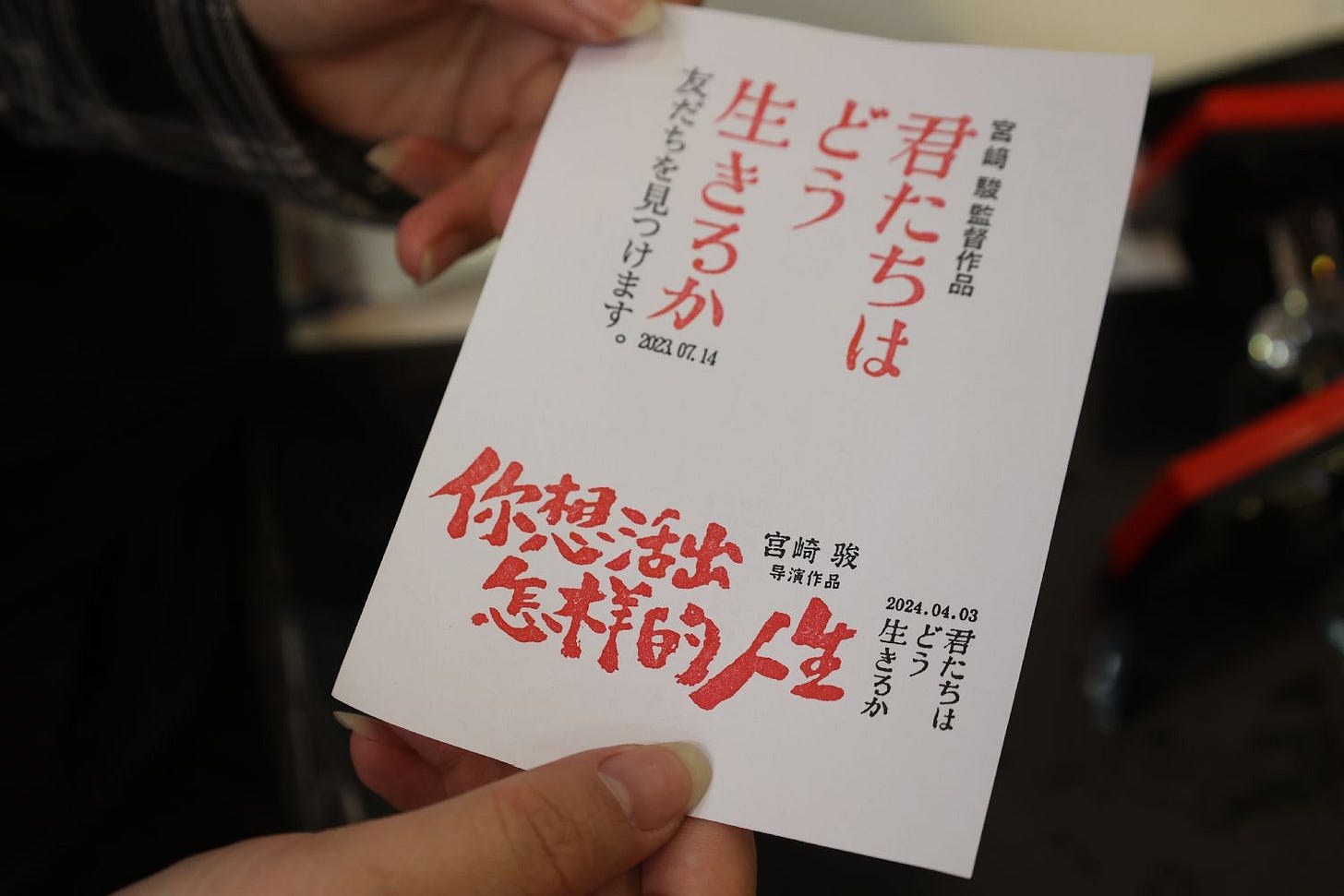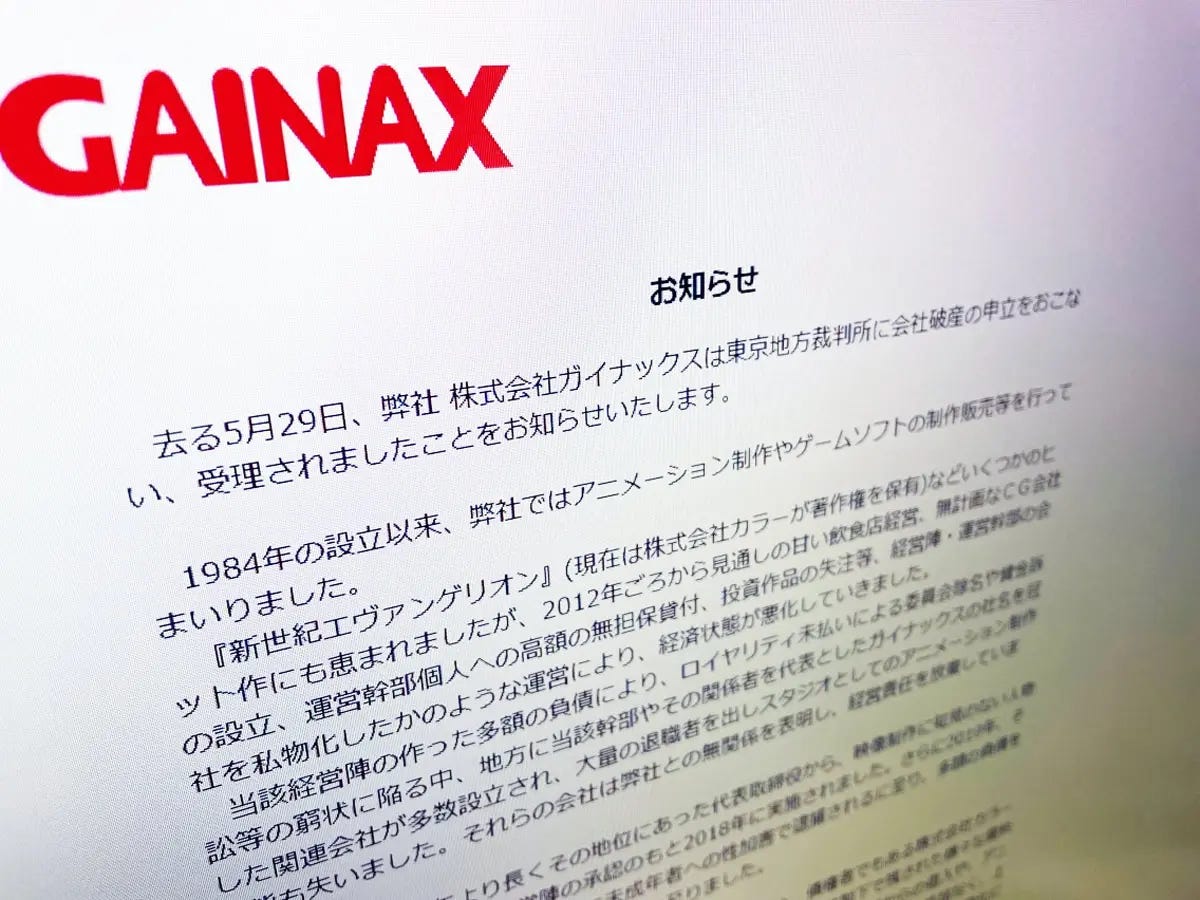U.S. trade war jeopardizes key anime market
Plus: Video production bankruptcies hit 15-year high; Isekai light novels outsold by manga versions; ‘Crayon Shin-chan’ arrives in Indian theaters; and more
This is your weekly Animenomics briefing, covering the business of anime and manga. Today is Wednesday, April 9, 2025.
In case you missed it: The United States looks set to end duty exemptions this year on all cross-border e-commerce purchases below US$800 in value, putting billions of dollars’ worth of anime merchandise bought by U.S. customers at risk of import tariffs.
Beenos, the operator of Japanese proxy purchasing service Buyee, has benefited from the so-called de minimis treatment that applies to most cross-border anime merchandise purchases, but it’s now preparing for potential new tariffs.
“Our first priority is to comply with the tariff rules in accordance with the laws and regulations, since these are rules set by the United States,” Beenos deputy head of global commerce Sei Sato told Animenomics. “On top of that, we will work with logistics companies to consider ways to make it easier to pay customs duties.”
Trade war could push anime companies to new markets

New import tariffs and a deepening trade war between the United States and the rest of the world could push Japan’s anime companies to shift growth efforts from North America to emerging markets with fewer trade barriers.
Why it matters: North America, especially the United States, has long ranked among the top regions for anime content and merchandise license contracts, according to Association of Japanese Animations data.
A U.S. economy weakened from recession induced by the trade war could result in fewer anime contracts as consumers pull back on spending.
Driving the story: China is reportedly considering reducing or banning the import of films from the United States in retaliation against tariffs, The Hollywood Reporter said on Tuesday, potentially opening films release slots to other countries.
While China is losing interest in Hollywood films, interest in Japanese films is at an all-time high.
By the numbers: Chinese cinemas screened a record 26 Japanese films in 2024, one more than it did in 2019, the year before the COVID-19 pandemic.
Among the 26 Japanese films released in the mainland last year, anime occupied all of the top ten positions in box office earnings.
Total box office revenue from Japanese films also rose to a record CN¥2.4 billion (US$327 million), 46 percent higher than in 2019.
Zoom out: As previously reported by Animenomics, emerging markets were already seeing increasing cross-border purchases from Japan last year, according to data from Japanese proxy purchasing service Buyee.
Anime-related cross-border e-commerce purchases in Latin America and Southeast Asia jumped 58 percent and 44 percent, respectively, in 2024.
What we’re watching: How trade negotiations between Japanese and U.S. officials will play out.
Video production studio bankruptcies hit 15-year high

Six anime studios closed due to insolvency last year as bankruptcies in Japan’s video production industry hit a 15-year high, according to a survey of corporate credit data by Tokyo Shoko Research, a credit reporting agency.
Why it matters: Japan’s video production companies traditionally relied on television and film contracts for business, but budgets for conventional programs are shrinking amid a shift to online and digital media.
Zoom in: More than 80 percent of the studio bankruptcies involved debt below ¥100 million (US$680,000), a sign that closures are largely impacting small video production studios.
Debts owed by the 58 studios that went bankrupt last year totaled more than ¥5 billion (US$34 million), which is about one-third of total debt in peak year of the 2008–2010 bankruptcy wave.
Rewind: As previously reported by Animenomics, profits are diverging even between larger anime studios and smaller ones.
About 78 percent of large anime studios reported net profit in 2023, compared to 57 percent of smaller subcontracting studios, according to a survey by Teikoku Databank, another credit reporting agency.
What we’re watching: Broadcasters and distributors are also starting to bring video production in-house rather than relying on specialty video production studios thanks to advances in video production technology and software, says Tokyo Shoko Research.
The result is increasing competitive pressure not only from digital video startups, but also from large media companies.
Clippings: Print comics, manga exempt from U.S. tariffs
U.S. comics and manga publishers will largely be spared the effects of the government’s newly imposed import tariffs as they included exemptions for books and other materials printed overseas. (Publishers Weekly)
“Almost everything in the store, from the comics and graphic novels to the manga, to the Hello Kitty plushies, board games—almost all of it comes from overseas,” Washington, D.C.-based Fantom Comics owner Jacob Shapiro told a national television news program.
In-store manga sales revenue among Japanese booksellers fell 2.8 percent in the fiscal year ending in March 2025, according to a survey of point-of-sale system data by book distributor Nippan. (Press release)
Zoom in: Thanks to strong in-store demand for the latest One Piece and Spy × Family manga volumes, monthly manga sales rose for the first time in two years.
Webtoon production studio Whomor reported a net loss of ¥9 million (US$63,000) for the fiscal year ending in October 2024. (Gamebiz)
Isekai light novels outsold by their manga adaptations
“Industry leaders recognize the immense potential windfalls from a [web novel’s] successful comic remediation. At Kadokawa, Chief Publishing Officer [Masayuki Aoyagi] noted that comic remediations of isekai novels sold 2.5 to 3 times more than the original works. The web novel platform Alphapolis now prints comics in addition to books, and as of May 2019, remediated comics bring in more revenue than their original repackaged books. The animation industry, even more hawkish towards profitability, only selects a small minority of written works for adaptation.”
— Ichishi Iida, independent scholar, and Scott Ma, University of Zurich Ph.D. candidate
Context: Researchers Iida and Ma, in a recent research manuscript, trace the origins of Japan’s web novels, popularized by online platforms like HinaProject’s Shōsetsuka ni Narō, and seek to explain how the publishing format became a commercial success in today’s anime and manga industry.
A preprint was accepted for publication in Mechademia, the preeminent academic journal of anime, manga, and East Asian fan cultures, and a peer-reviewed version will be printed in the journal’s upcoming summer issue.
TV Asahi launches ‘Crayon Shin-chan’ in Indian theaters

Japanese private broadcaster TV Asahi is gearing up for a breakout year in its overseas anime business as two Crayon Shin-chan feature films, whose original broadcast rights are owned by the network, are scheduled to open in Indian theaters this year.
Why it matters: Crayon Shin-chan films have traditionally aired on television in India, IGN India reports, making these the first films in the series to be released in theaters.
The original anime series is favorite among Indian television viewers. TV Asahi says an estimated one in ten Indian children has watched it.
What’s happening: TV Asahi is working with Gurgaon-based PVR Inox Pictures to distribute Shin-chan: Our Dinosaur Diary in May and Shin-chan: The Spicy Kasukabe Dancers in October.
The release of The Spicy Kasukabe Dancers coincides with India’s Diwali holiday season and also capitalizes on the film’s premise, where the series protagonist visits an Indian city.
“I shared a few seconds of the footage with people in India, and they were able to laugh at the jokes, so I thought that was a good thing,” head of anime and IP promotion Hitoshi Ono said in an interview with The Tsukuru magazine.
“To enhance the excitement for the Indian audience, we have dubbed the movies into Hindi, Tamil, and Telegu,” head of animation sales and development Maiko Sumida said in a statement to media.
Rewind: Our Dinosaur Diary earned ¥2.69 billion (US$18.5 million) in the Japanese box office last year, the highest among all Crayon Shin-chan films and ranking seventh among 2024’s top-grossing anime films.
One more thing: TV Asahi is also scheduled to air an Indian remake of Obocchama-kun later this year in cooperation with Sony Pictures Network India, adding to the list of anime projects being developed by the broadcaster in the subcontinent.
Animenomics is an independently run and reader-supported publication. If you enjoyed this newsletter, consider sharing it with others.



